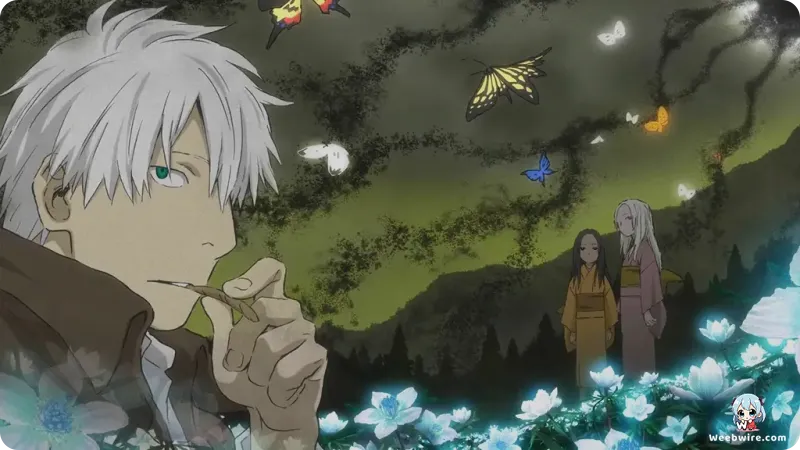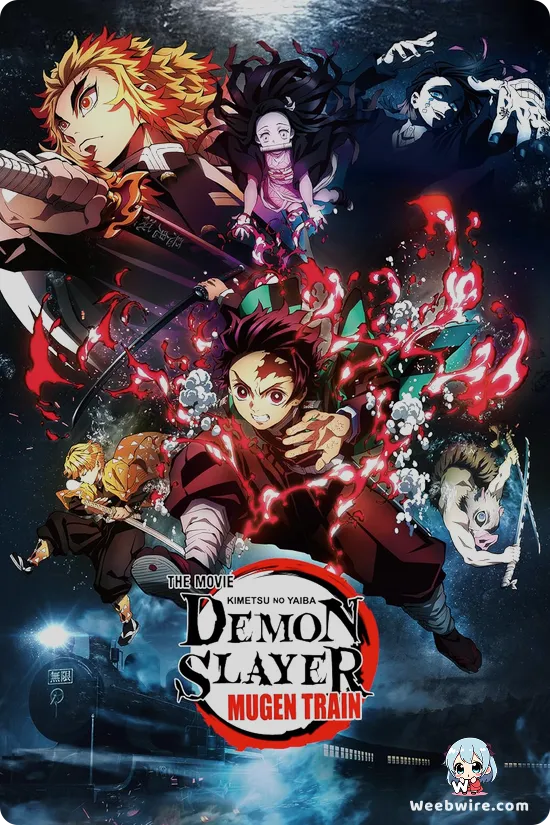Mushi-Shi: A Timeless Masterpiece Unveiled – Exploring Its Ethereal World and Enduring Philosophical Resonance

In the expansive landscape of anime, where narratives often lean into epic battles or high-stakes romances, a unique masterpiece quietly emerges: MUSHI-SHI. Animated by Studio Artland and first gracing screens in October 2005, this critically acclaimed series transcends typical genre boundaries. It's a meditative journey into the ethereal, a profound exploration of humanity's delicate and often fragile relationship with an unseen world. Far from conventional shonen or shojo tropes, MUSHI-SHI carves its own distinctive niche, offering a viewing experience as calming as it is thought-provoking, rich with fascinating details often overlooked.
The Enigmatic Mushi
Central to MUSHI-SHI's allure are the Mushi themselves. Unlike traditional monsters or spirits, Mushi are primal, amorphous life forms, more akin to natural phenomena or fundamental forces than living beings in a conventional sense. They exist just beyond human perception, manifesting as bizarre, beautiful, and sometimes unsettling entities, ranging from swirling lights and sentient fog to living rainbows and parasitic plants. The series meticulously details their diverse forms, life cycles, and profound effects on both the environment and humans, showcasing the remarkable imaginative depth of original manga author Yuki Urushibara. This nuanced portrayal means conflicts rarely involve a clear antagonist; instead, they stem from accidental, often tragic, interactions between humans and Mushi, driven by misunderstanding or the Mushi's simple instinct to exist.
Ginko: The Mushi Master
The narrative backbone is Ginko, the enigmatic Mushi Master. Ginko is arguably one of anime's most unique protagonists, not a hero in the traditional sense, nor one who seeks to eradicate Mushi. His role is that of a mediator, observer, and problem-solver, traveling from village to village to aid those afflicted by Mushi-related ailments. A fascinating tidbit about Ginko is his striking appearance: his white hair and perpetually closed left eye are consequences of his own past encounter with Mushi, which also granted him the ability to see and attract them. He carries a kiseru, a Japanese smoking pipe, used to repel Mushi with its smoke, a practical tool for his profession. Ginko's demeanor is calm and detached, yet deeply empathetic. He understands Mushi are part of the natural order, and his solutions often involve restoring balance rather than eliminating them, highlighting the series' core philosophy of coexistence.

A Masterclass in Episodic Storytelling
A distinctive feature setting MUSHI-SHI apart is its ingenious episodic structure. Each episode presents a self-contained story, focusing on a different human-Mushi interaction. This format allows the series to explore an incredible breadth of human experiences, emotions, and local folklore without being constrained by a single overarching plotline. This deliberate pacing contributes to its meditative quality, inviting viewers to immerse themselves in individual tales of wonder, sorrow, and resilience. It's a testament to the storytelling that even without a continuous main plot, the series maintains a compelling flow, each episode serving as a poignant vignette that collectively paints a rich tapestry of the Mushi world.
Artland's Visual and Aural Symphony
Studio Artland's contribution to MUSHI-SHI's enduring appeal is immeasurable. Their animation brings Urushibara's intricate world to life with breathtaking detail. Natural landscapes, from lush forests to tranquil mountains, are rendered with exquisite beauty, often bathed in soft, atmospheric lighting. The Mushi designs are equally captivating, perfectly capturing their otherworldly essence. Beyond visuals, the sound design is a masterclass in subtlety. Meticulously crafted ambient sounds, such as rustling leaves and flowing water, draw the viewer deeper. Complementing this is Toshio Masuda's ethereal and often melancholic musical score, which uses traditional Japanese instruments blended with modern orchestration, creating a haunting and deeply moving soundscape that elevates the entire viewing experience.
Profound Philosophical Resonance
The philosophical depth of MUSHI-SHI profoundly resonates with its audience. The series frequently touches upon themes of fate, acceptance, the cyclical nature of life and death, and the often-unseen consequences of human actions on the natural world. It subtly questions humanity's place in the grand scheme, suggesting we are not masters of nature but merely one component within its intricate web. The Mushi, indifferent to human morality, serve as mirrors, reflecting humanity's fears, desires, and vulnerabilities. This mature approach to storytelling, devoid of simplistic good-vs-evil narratives, is a significant reason for its critical acclaim and enduring popularity among those seeking a more profound anime experience.
Indeed, MUSHI-SHI has garnered significant accolades, including the Kodansha Manga Award for its original manga in 2006 and the Excellence Prize at the Japan Media Arts Festival, affirming its artistic merit. Studio Artland's adaptation is widely considered a faithful and masterful rendition. For fans seeking something truly different, a series prioritizing atmosphere, introspection, and a deep respect for natural mysteries over explosive action, MUSHI-SHI remains an unparalleled gem. It invites viewers to slow down, observe, and ponder, leaving a lasting impression long after the credits roll, proving that sometimes, the most profound stories are told in the quietest whispers.
Credits
MUSHI-SHI
Author
Yuki Urushibara
Cover Art
Yuki Urushibara
Studio
Artland
Publisher
Kodansha
Producers





